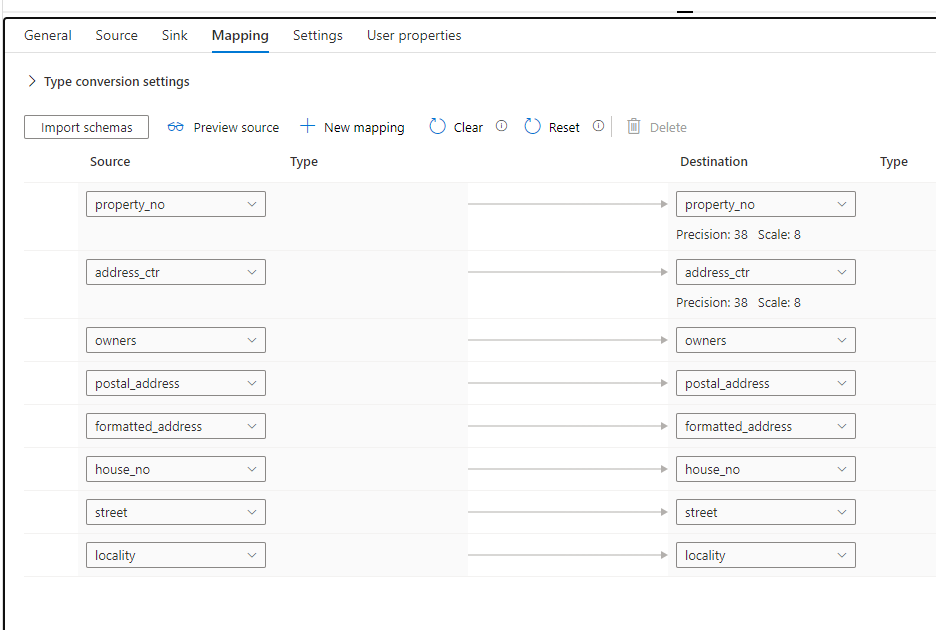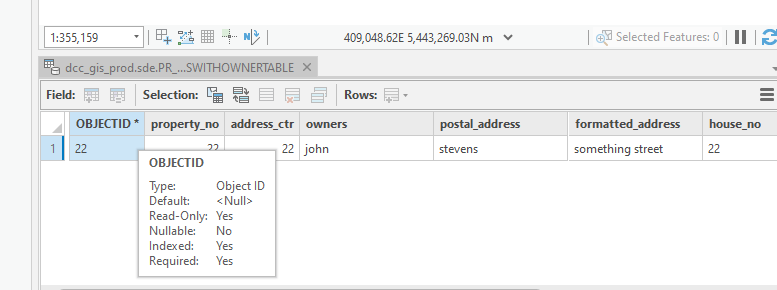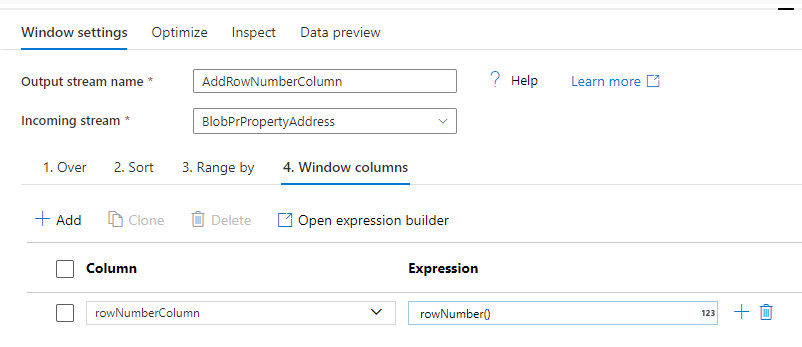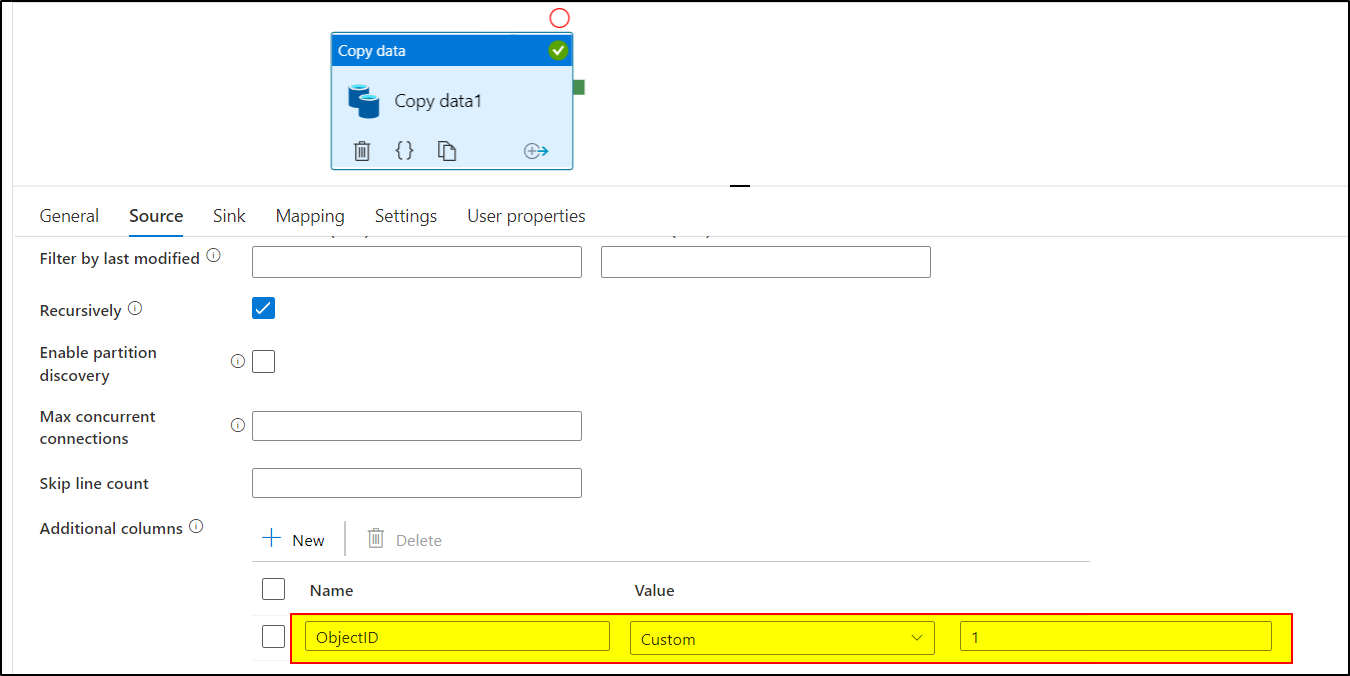Hello, Sorry if this seems Obvious, I am new to Azure Data Factory and have been trying to learn.
I have an azure Blob that i want to copy into an Azure SQL DB that is for Spatial Data. The Azure Spatial data has an ObjectID field which is of type Object ID and is not editable.
When i create a link to the SQL in ADF, it interprets that field as an int, and i can't seem to change it

My Source Data doesn't have an ObjectID field so i just want to do a copy of the data from the source Blob to the sink SQL table without worrying about the ObjectID and let the database populate that field instead.
Source blob:

Copy Source pipeline:

Sink Pipeline:

mapping pipeline (Note i don't specify the ObjectID):

the error relates to not populating the ObjectID field with Null, but i don't believe i could populate Object ID anyway even if i did have an incrementing integer field in my source to copy from .
Operation on target T1ProertyToAzureESRIProperty failed: Failure happened on 'Sink' side. ErrorCode=SqlOperationFailed,'Type=Microsoft.DataTransfer.Common.Shared.HybridDeliveryException,Message=A database operation failed. Please search error to get more details.,Source=Microsoft.DataTransfer.ClientLibrary,''Type=System.Data.SqlClient.SqlException,Message=Cannot insert the value NULL into column 'OBJECTID', table 'dcc_gis_prod.sde.PR_PROPERTYADDRESSWITHOWNERTABLETESTBLOBLINK'; column does not allow nulls. INSERT fails.
The statement has been terminated.,Source=.Net SqlClient Data Provider,SqlErrorNumber=515,Class=16,ErrorCode=-2146232060,State=2,Errors=[{Class=16,Number=515,State=2,Message=Cannot insert the value NULL into column 'OBJECTID', table 'dcc_gis_prod.sde.PR_PROPERTYADDRESSWITHOWNERTABLETESTBLOBLINK'; column does not allow nulls. INSERT fails.,},{Class=0,Number=3621,State=0,Message=The statement has been terminated.,},],'
I assume this is obvious to some out there, it's just that I am learning and am still very fresh to working this out, The person who has shown me how to set these up, hasn't had to deal with an ObjectID field or a mismatched source to destination field mapping.
Is this an easy thing that i can resolve, It feels if i can change the field type in the destination map, then i would hopefully be ok, but i can't edit any of those fields.
data type for ObjectID as i see it in GIS Pro













 or upvote
or upvote  button whenever the information provided helps you.
button whenever the information provided helps you.